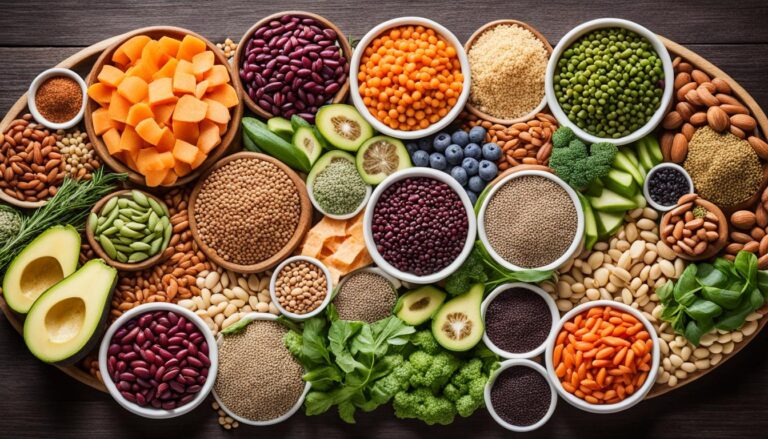Did you know that small daily changes can significantly boost your well-being? Many people assume that maintaining a strong cardiovascular system requires drastic measures.
But research from top institutions like Johns Hopkins and Washington University proves otherwise.
The American Heart Association’s Life’s Essential 8 framework highlights simple, science-backed strategies. These include balanced nutrition regular movement, and stress management. Combining these habits creates lasting benefits for your body.
What’s most encouraging? Many risks linked to poor circulation or sluggish metabolism can be reversed. With the right approach, you can take control of your vitality starting today.
Key Takeaways
- Small lifestyle adjustments offer big rewards for your wellness.
- The Life’s Essential 8 plan provides a clear roadmap.
- Weight control and activity work best when paired.
- Diet plays a crucial role in maintaining energy levels.
- Early action helps prevent long-term complications.
1. The Power of Weight Loss for Heart and Metabolic Health
Losing just 10% of body weight can transform your cardiovascular system. A Washington University study found this modest reduction improves four key metrics blood pressure, arterial health, heart muscle thickness, and cholesterol levels. Participants who shed 22 pounds saw measurable changes in just months.
How Obesity Reshapes Your Heart
Excess body fat forces the heart to work harder, enlarging its chambers and thickening muscle walls. This remodeling strains heart function, raising risks for diabetes and hypertension. Dr. de las Fuentes’ research shows these changes aren’t permanent weight loss reverses them, even after partial regain.
Rapid Benefits Beyond the Scale
Dr. Klein’s team discovered liver fat a driver of insulin resistance melts within days of calorie restriction. Whether you choose low fat or low-carb diets, heart function improves similarly. Benefits persist participants kept gains despite regaining 9 pounds over two years.
Your First Goal: 10% Reduction
Aim to lose 10% of your body weight as a realistic target. This drop significantly lowers blood pressure and enhances metabolic function. Pair dietary changes with activity for lasting results.
2. Aerobic and Resistance Training A Dual Approach
Pairing cardio with strength workouts creates a powerful health boost. Combining these methods maximizes results better circulation stronger muscles, and improved metabolism. Experts at Johns Hopkins recommend this hybrid strategy for lasting vitality.

Aerobic Exercise Boosting Circulation and Heart Efficiency
Aerobic exercise, like brisk walking or cycling, enhances your heart muscle efficiency. Aim for 150+ minutes per week of moderate activity. This routine lowers blood pressure and increases oxygen flow.
Cardiac output improves by 20% with consistent cardio. Cycling offers slightly higher gains than walking but both work. Start with 30-minute sessions, five days weekly.
Resistance Training Reducing Body Fat and Improving Cholesterol
Resistance training twice weekly cuts body fat and balances cholesterol. It raises HDL good cholesterol while lowering LDL. Squats and push ups preserve lean mass during weight loss.
Dr. Klein’s research shows these benefits persist even if weight fluctuates. Pair strength sessions with cardio for optimal results.
Flexibility and Balance Supporting Overall Fitness
Tai chi or yoga stabilizes joints preventing injuries. Dr. Stewart calls flexibility the foundation of sustainable exercise. Older adults should prioritize balance drills.
Sample weekly plan:
- Monday/Wednesday: 30-minute cardio
- Tuesday/Thursday: Strength training
- Friday: Yoga or stretching
3. Eat Better for a Healthier Heart
Food choices shape your vitality, with certain diets cutting heart disease risk by 30%. The Mediterranean eating pattern, rich in plants and healthy fats, shows how flavor and wellness coexist. Simple swaps create lasting benefits for your circulation and energy levels.
Prioritize Whole Foods Over Processed Alternatives
Whole foods like vegetables, nuts, and legumes deliver fiber that regulates blood sugar. Unlike processed items, they contain natural vitamins without added sodium or preservatives. A colorful plate ensures diverse nutrients.
Compare these nutrient profiles per 100 calories:
| Food Type | Fiber g | Sodium mg | Added Sugars g |
|---|---|---|---|
| Steel-cut oats | 4 | 0 | 0 |
| Flavored instant oatmeal | 2 | 180 | 12 |
| Fresh salmon | 0 | 50 | 0 |
| Breaded fish sticks | 1 | 340 | 2 |
Smart Oil Selection and Protein Portions
Non-tropical oils like olive and canola contain balanced omega-3/6 ratios. The AHA recommends getting under 25% of daily calories from these fats. Their smoke points determine cooking safety:
- High heat: Avocado oil 520°F
- Medium heat: Olive oil 375°F
- No heat: Flaxseed oil 225°F
For proteins visualize portions using these guides:
- Chicken/fish: Deck of cards 3oz
- Nuts: Golf ball 1oz
- Cheese: Four dice 1.5oz
Meal prep template for stable blood sugar:
- Fill half your plate with non-starchy vegetables
- Add palm-sized lean protein
- Include thumb-sized healthy fats
- Choose fist-sized whole grains
4. Quit Tobacco to Reduce Heart Disease Risk
Tobacco use remains one of the most preventable causes of cardiovascular damage. Smoking contributes to 33% of deaths linked to heart disease, while secondhand smoke affects 40% of U.S. children. The good news? Your body begins healing within hours of quitting.

The Impact of Smoking on Blood Pressure and Arteries
Nicotine triggers a chain reaction: inhaled chemicals enter lungs, absorb into blood, and constrict arteries within minutes. This spikes blood pressure and forces the heart to pump harder. Over time, plaque builds up, narrowing pathways and raising high blood pressure risks.
Dr. Robert Brook’s research shows smoke’s toxins also stiffen arterial walls. Even occasional smokers face 30% higher risk heart disease than non-smokers. Workplace smoking bans, however, reduce hospitalizations by 15% within a year.
Strategies for Overcoming Nicotine Addiction
Effective quitting blends science and support:
- Nicotine replacements: Patches provide steady doses, while prescription medications like varenicline curb cravings.
- Timeline of recovery: Carbon monoxide levels normalize in 12 hours. After a year, heart disease risk drops by half.
- Local resources: State quitlines e.g. 1-800-QUIT-NOW offer free coaching and tailored plans.
Pair these tools with aerobic exercise to accelerate lung repair and stress management to reduce relapse triggers.
5. Prioritize Quality Sleep for Metabolic Health
Sleep isn’t just about rest it directly fuels your body’s vital systems. Research shows getting under seven hours nightly doubles diabetes risk while impairing heart function. Your nightly recharge cycle regulates hormones, repairs tissues, and balances energy use.
Circadian Regulation of Cortisol and Insulin
Deep sleep stages lower cortisol by 60%, reducing blood sugar spikes. Meanwhile, REM phases enhance blood flow to cardiac muscles. Disrupted rhythms confuse the pancreas, triggering excess insulin production.
Key hormonal shifts during sleep:
- 10 PM-2 AM: Growth hormone peaks for tissue repair
- 3-5 AM: Cortisol rises to prepare for wakefulness
- 5-7 AM: Insulin sensitivity reaches daily high
Optimal Sleep Durations by Age Group
Children need 10-16 hours for brain development, while adults require 7-9 hours. Seniors often achieve less deep sleep but still need 7-8 hours total. Consistency matters more than perfect duration going to bed within a 30-minute window daily stabilizes rhythms.
Bedroom optimization checklist:
- Set thermostat to 65°F 18°C
- Use blackout curtains
- Install white noise at 50 decibels
- Remove electronics emitting blue light
For sleep apnea patients, CPAP therapy cuts hypertension risks by 37% within three months. Avoid caffeine after 2 PM its half-life lasts 5-6 hours, disrupting early sleep cycles.
6. Manage Cholesterol and Blood Sugar Levels
Balancing cholesterol and blood sugar isn’t just about numbers it’s about protecting your body’s vital systems. Unchecked, high levels damage arteries and disrupt energy metabolism. Simple tests and dietary shifts can restore balance.

Understanding Non HDL Bad Cholesterol
Non HDL cholesterol total minus HDL predicts cardiovascular risk without fasting. Unlike LDL alone, it includes artery-clogging remnants like VLDL. Ideal levels are below 130 mg/dL.
Decode your lipid panel:
- HDL good: Clears excess cholesterol aim >40 mg/dL for men, >50 mg/dL for women.
- Triglycerides: Store unused calories optimal
- Total/HDL ratio: Below 5:1 reduces heart disease risk.
Statin alternatives for cholesterol management:
- Plant sterols 2g/day block absorption.
- Psyllium husk 10g/day binds bile acids.
- Omega-3s 1g EPA/DHA lowers triglycerides.
Monitoring Hemoglobin A1c for Long Term Blood Sugar Control
Hemoglobin A1c reflects average blood sugar over 3 months. Levels above 5.7% signal prediabetes 6.5%+ indicates diabetes. Test quarterly if results are borderline.
Continuous glucose monitors CGMs track real-time spikes better than fingersticks. Compare accuracy:
| Method | Error Rate | Best For |
|---|---|---|
| CGM | ±10% | Trend analysis |
| Glucose meter | ±15% | Single readings |
Glycemic index guide for stable blood sugar:
- Low ≤55: Lentils, apples, barley.
- Medium 56–69: Brown rice, bananas.
- High ≥70: White bread, watermelon.
7. Control Blood Pressure Through Lifestyle Changes
Nearly half of American adults struggle with elevated blood pressure levels. Left unchecked, this condition strains arteries and raises risk heart complications. Yet, simple adjustments can restore balance without relying solely on medication.
The Silent Threat of Hypertension
Readings above 130/80 mmHg signal high blood pressure. Systolic pressure top number reflects artery force during heartbeats, while diastolic pressure bottom number measures rest phases. Both values matter persistent spikes thicken arterial walls, reducing flexibility.
Studies show 25–50% of hypertension patients already have heart damage. Early intervention prevents irreversible harm. Monitor trends with these home device standards:
| Monitor Type | Accuracy | Best For |
|---|---|---|
| Upper-arm cuff | ±3 mmHg | Clinical-grade results |
| Wrist cuff | ±5 mmHg | Portability |
| Smartwatch | ±10 mmHg | Trend tracking |
Daily Habits for Healthy Levels
The DASH diet prioritizes potassium-rich foods to counter sodium’s effects. Build meals with:
- Vegetables: Spinach 839mg potassium/cup and sweet potatoes
- Proteins: Salmon 534mg/3oz and white beans
- Fruits: Bananas 422mg each and oranges
Breathing techniques also help. The American Heart Association validates 4-7-8 breathing: inhale for 4 seconds, hold for 7, exhale for 8. Repeat 5 times daily to lower blood pressure by 5 mmHg.
8. Conclusion Small Steps for Lifelong Heart Health
Building lasting vitality starts with consistent, manageable actions. Washington University’s research proves maintaining a 10% weight loss stabilizes heart health long-term. Pair this with their 1% better daily philosophy for compounding benefits.
Focus on sustainable habits like weekly meal prep or short walks. Most insurers cover annual screenings for metabolic health markers. Early detection prevents complications.
Ready to take the next step? Explore clinical trials at Volunteer for Health 314-362-1000. Your journey to better health begins today.





